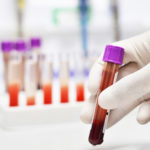Considering Cancer Salves?
What can you tell me about black salve/drawing salve?
Andrew Weil, M.D. | October 26, 2007

Black salve and drawing salve are terms that often refer to purported cancer remedies that frequently contain bloodroot (Sanguinaria canadensis), a small woodland herb that grows in the north central United States and Canada. I have used bloodroot preparations successfully for removal of moles and skin tags. (Skin tags are benign, skin-colored, rubbery growths that typically hang by a little stalk – common on the neck, armpits, groin, eyelids, and other body folds). The red juice from the bloodroot is poisonous when taken internally but when used externally has a unique ability to dissolve superficial skin growths without disturbing normal tissue.
For centuries, corrosive pastes and plasters, sometimes called black salves or drawing salves, have been applied directly to skin tumors in the hope of burning them away, or rubbed into the skin over internal tumors in hopes of “drawing out” the cancer. Although dermatologists sometimes use a mixture of bloodroot and zinc chloride to remove skin cancers, (a treatment known as “Mohs chemosurgery,” after the doctor who invented the technique), none of the black salves or drawing salves sold today have ever been formally tested, and no scientific evidence supports claims that these products are safe or effective.
Black salves are sometimes described as “escharotics” because they produce thick, dry scabs (“eschars”) such as those that form as chemical or thermal burns heal. Some people who use black salves report damage and scarring of normal tissue from them.
Little is known about the results of self-treatment for skin cancer with bloodroot pastes sold on the Internet or dispensed by traditional healers. A report by two dermatologists published in the December 2002 Archives of Dermatology described the cases of four patients who had tried the pastes on their own. One appeared to have a complete cure, but a biopsy showed residual tumor. Another got rid of his skin cancer but was severely scarred in the process. A third was lost to follow up, and a fourth appeared to have cured his nasal basal cell carcinoma for several years, but the cancer recurred, requiring extensive surgery. If you have a cancerous growth, you would be much better off with conventional skin cancer treatment, which has a cure rate approaching 100 percent for basal cell and squamous cell carcinomas and doesn’t damage adjacent tissues.
The American Cancer Society reports that some practitioners claim that cancer salves can destroy malignant cells or draw them out of the body, and that salves can cure any type of cancer without the need for such conventional treatments as surgery, chemotherapy, or radiation. I would love to see these reports investigated and the salves studied.
Bottom line: if you want to try a “black salve” containing bloodroot on a skin tag or mole, do so with caution, following careful instructions from someone expert in its use. If you are dealing with a malignant or possibly malignant growth, do not put your faith in such a product; let a dermatologist identify it and treat it appropriately.
Andrew Weil, M.D.










